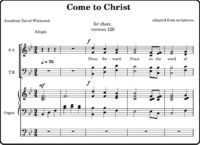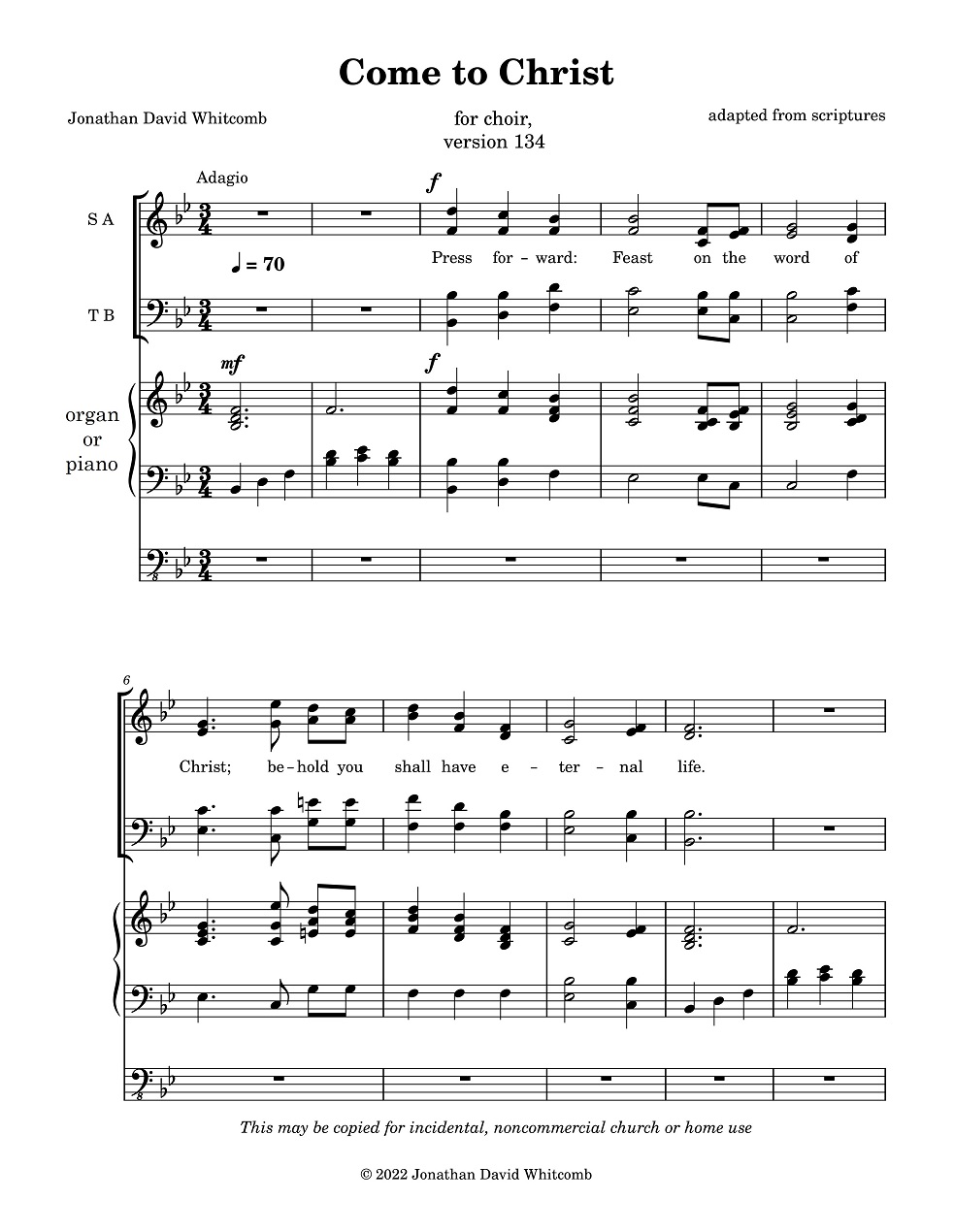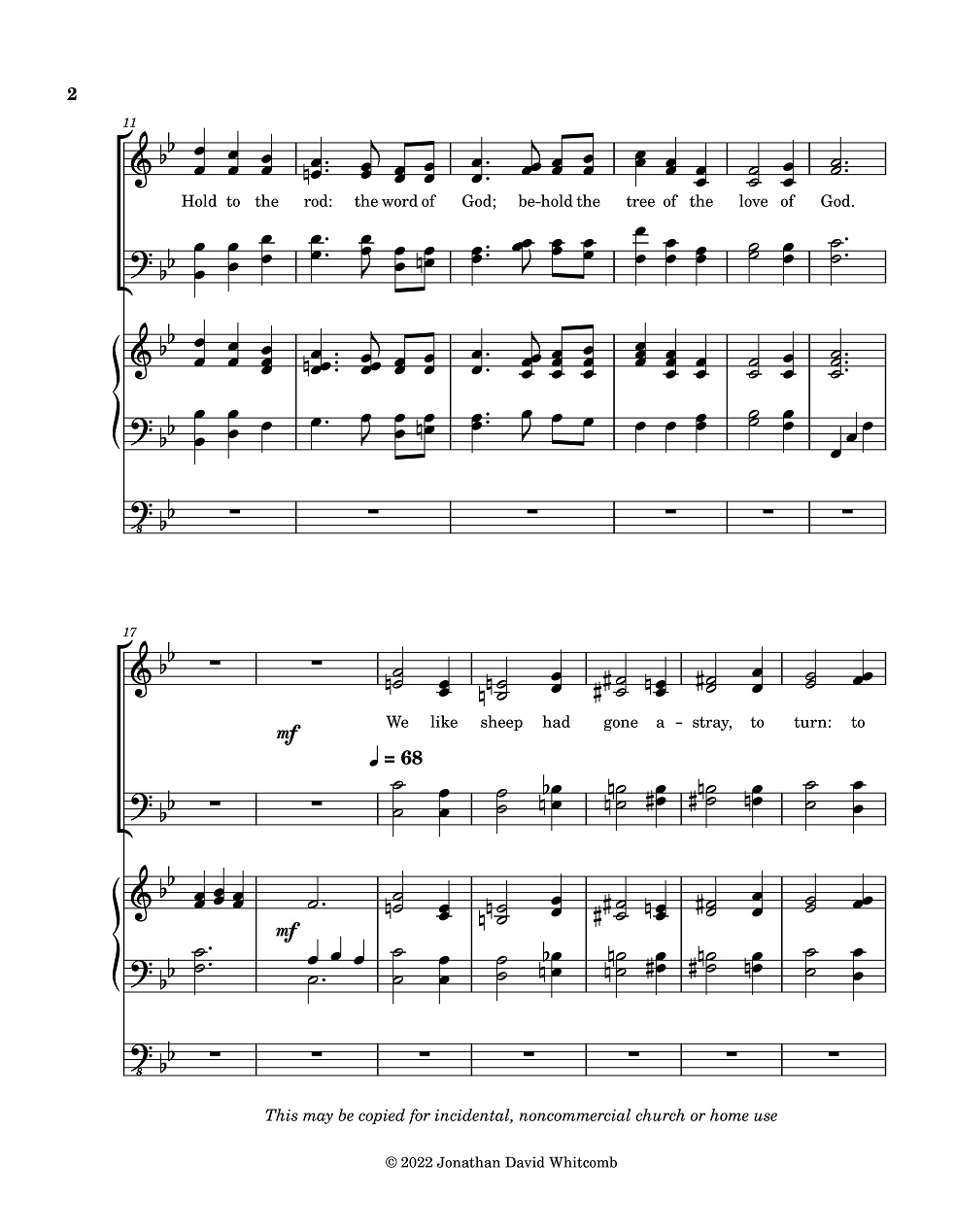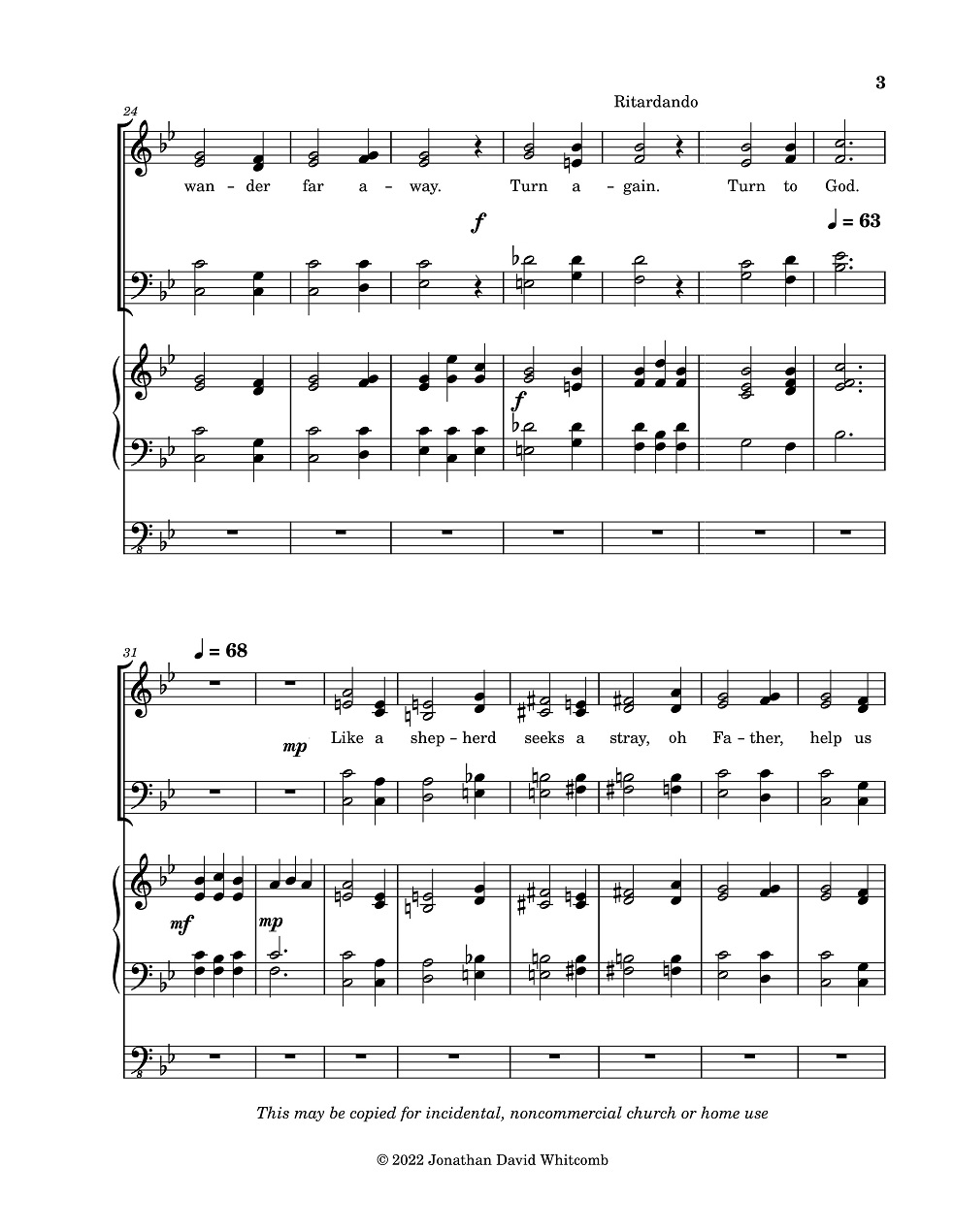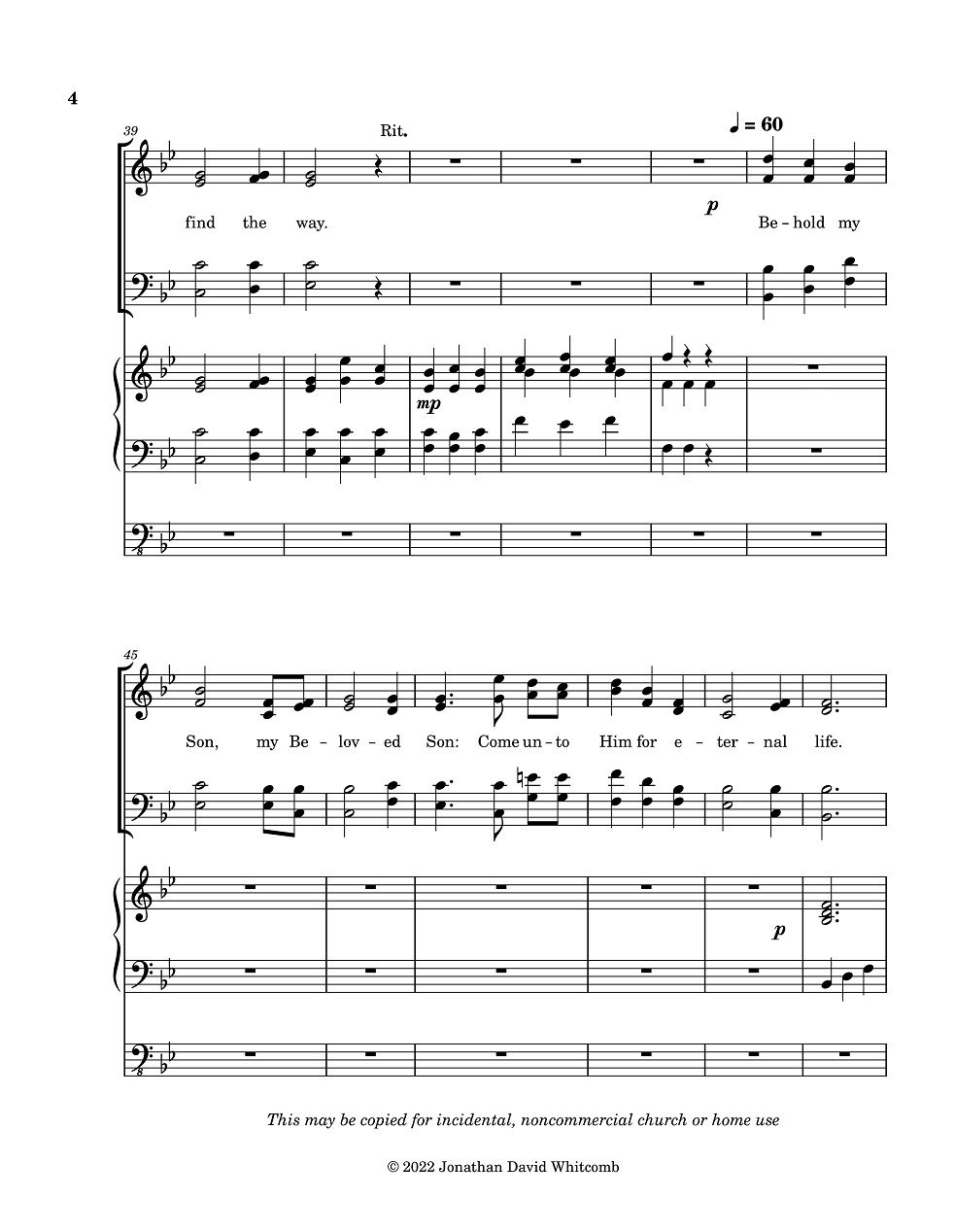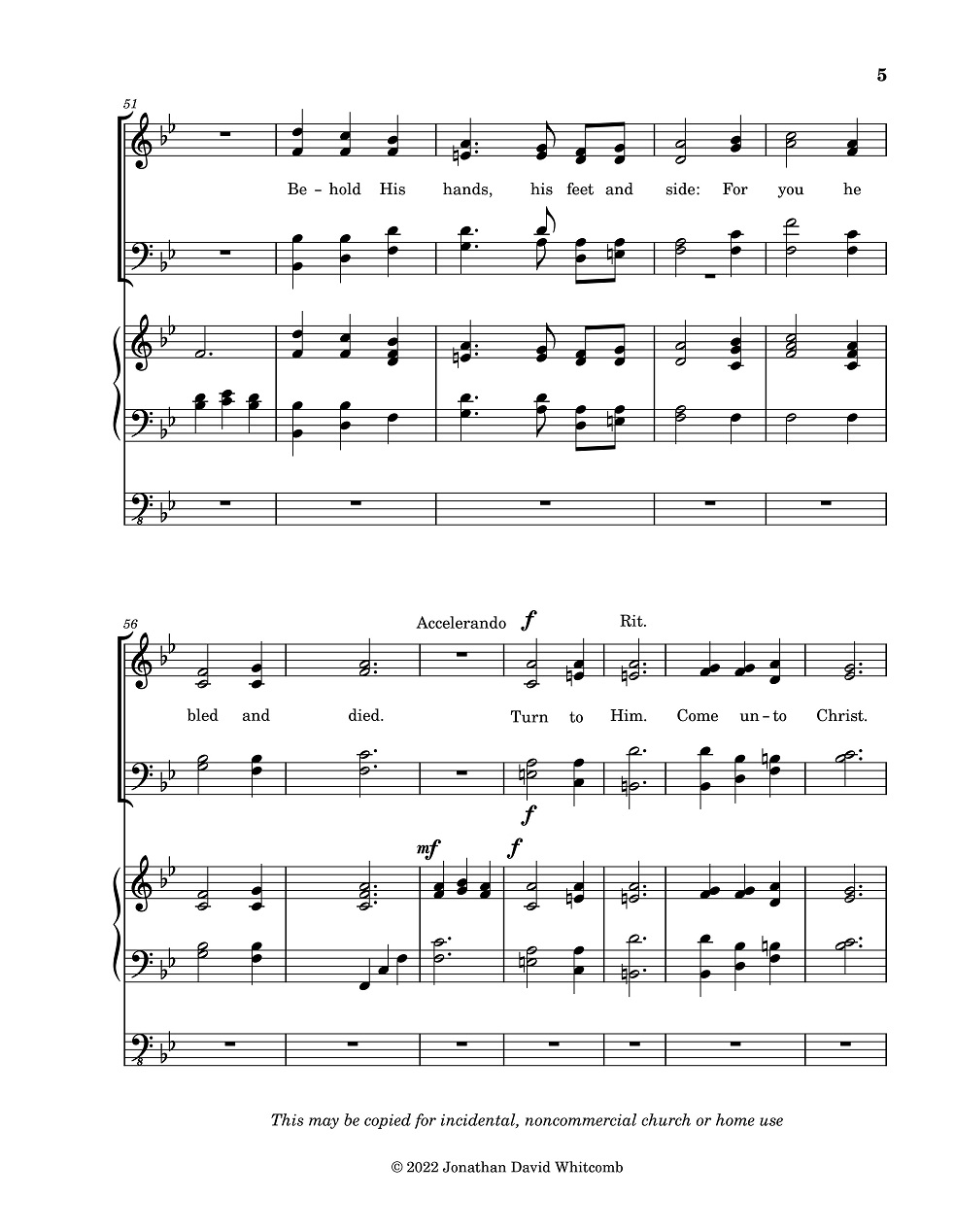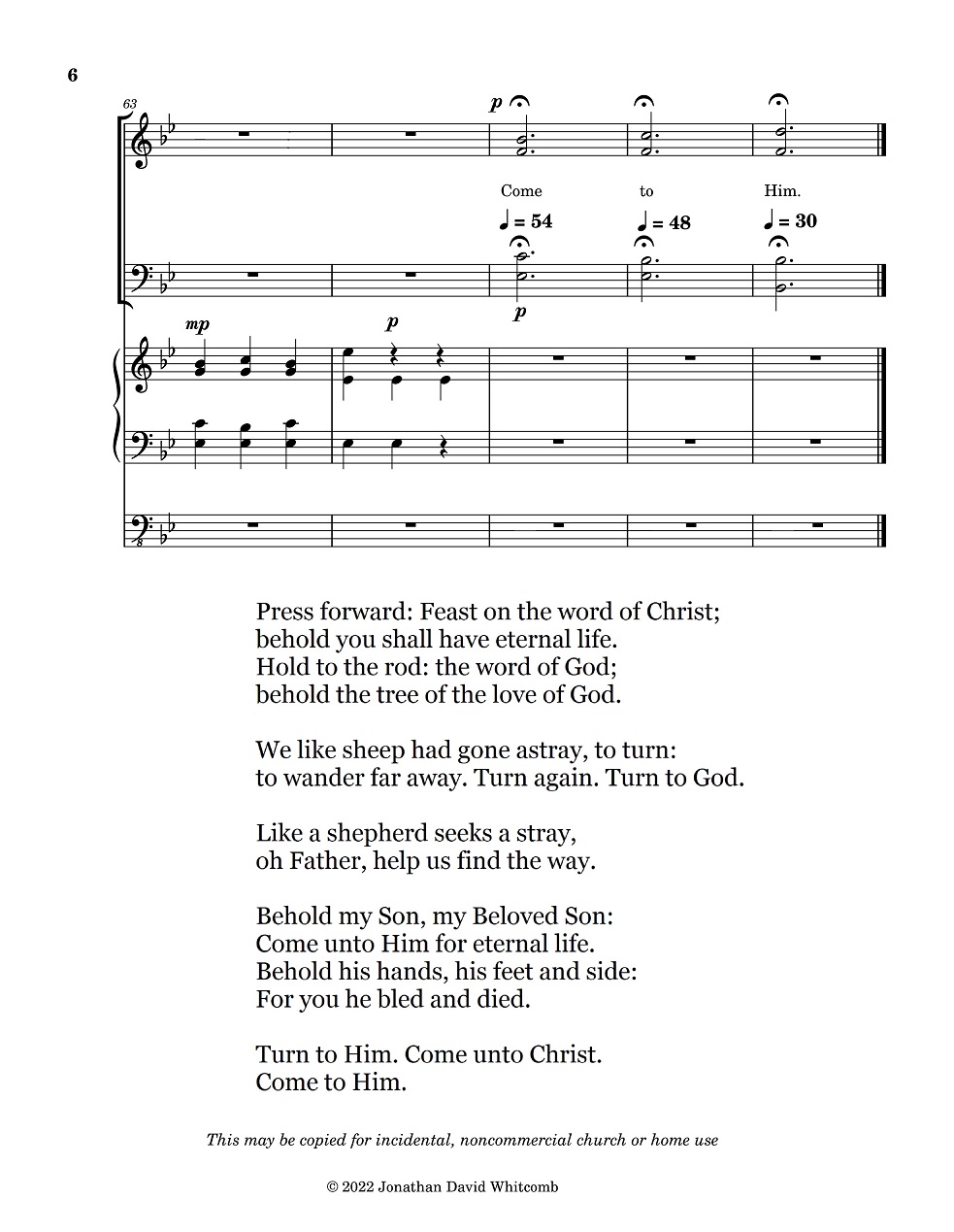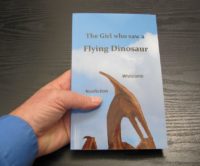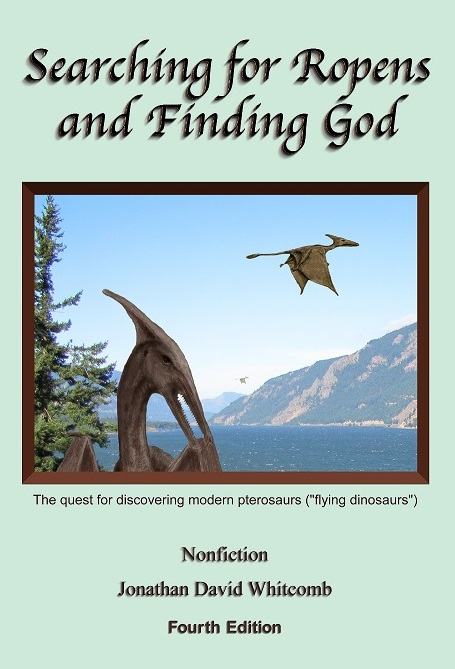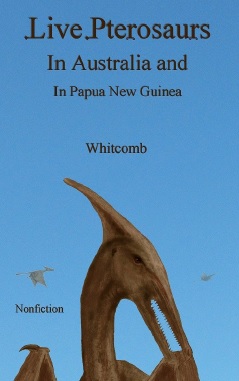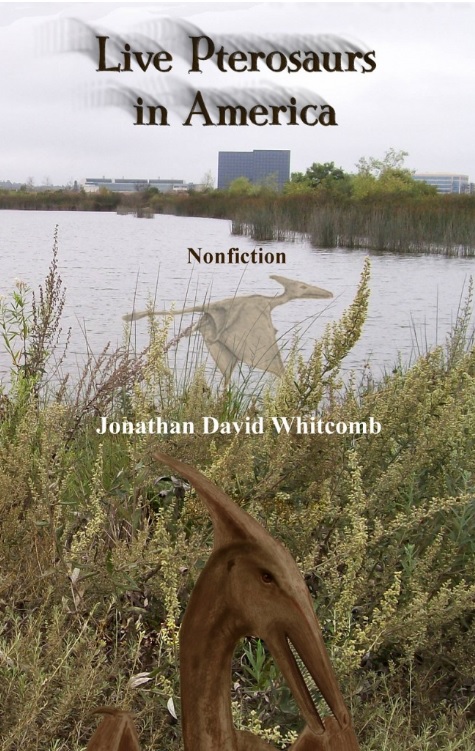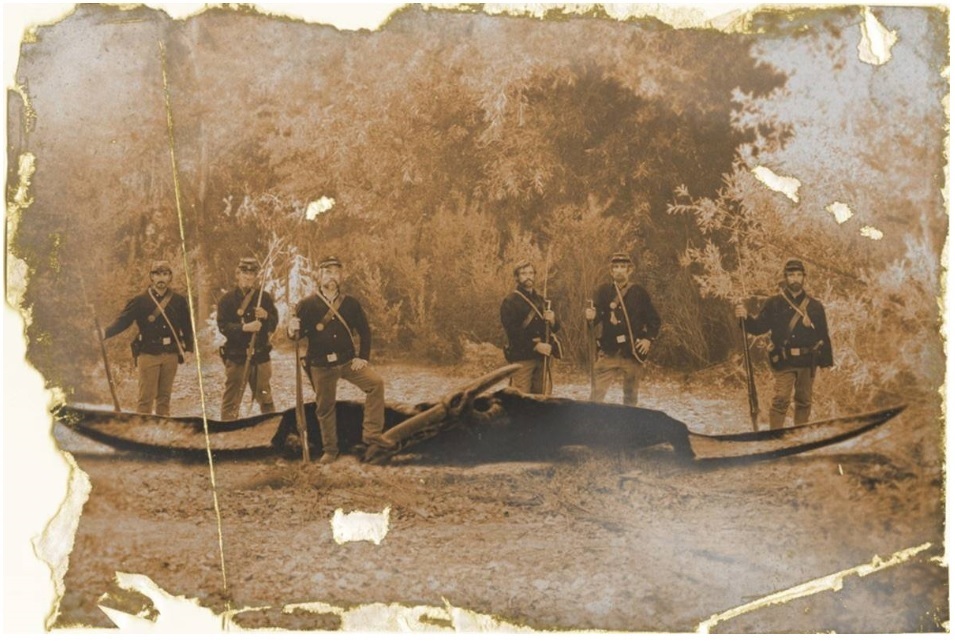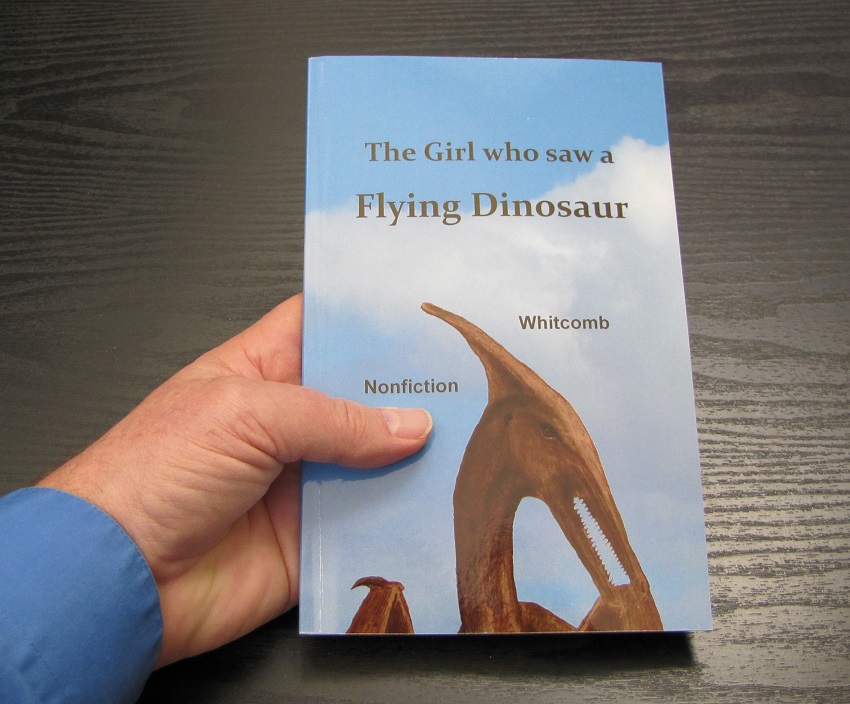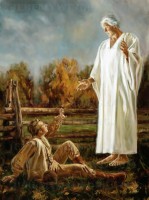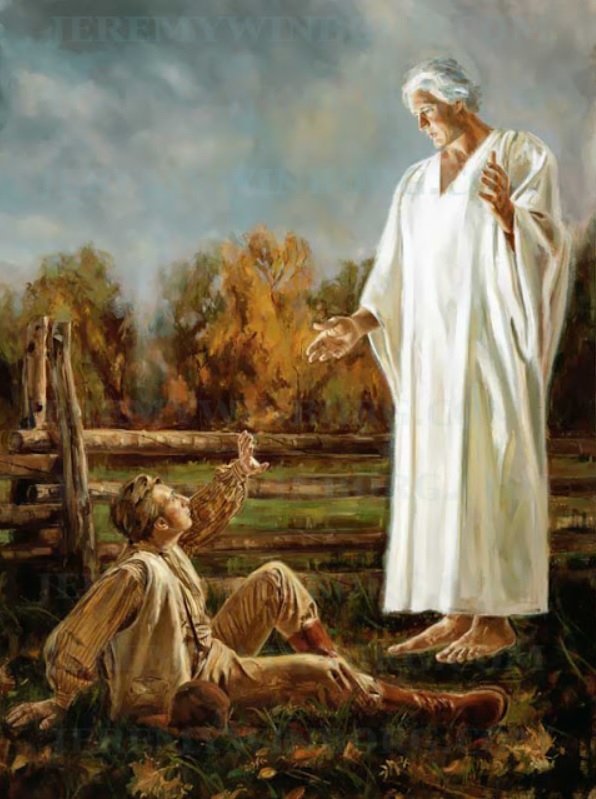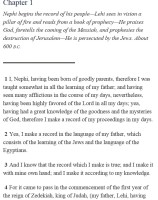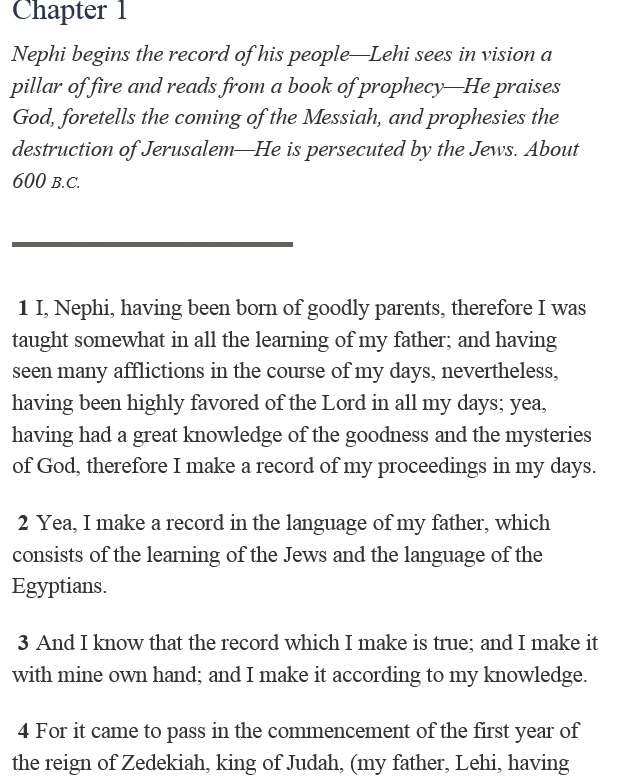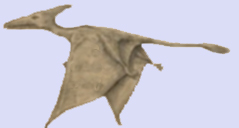By Jonathan Whitcomb [updated September 15, 2022]
(You can contact Jonathan David Whitcomb online)
The following is the text for the choir piece “Come to Christ” (YouTube), which choral piece I wrote in mid-2022 (see also the music score below, for soprano, alto, tenor, and bass, with organ):
Press forward: Feast on the word of Christ;
behold you shall have eternal life.
Hold to the rod: the word of God;
behold the tree of the love of God.We like sheep had gone astray, to turn:
to wander far away. Turn again. Turn to God.Like a shepherd seeks a stray,
oh Father, help us find the way.Behold my Son, my Beloved Son:
Come unto Him for eternal life.
Behold his hands, his feet and side:
For you he bled and died.Turn to Him. Come unto Christ.
Come to Him.
.
score of Come to Christ (pdf)
.
.
![]()
Contact Jonathan David Whitcomb
.
The words are adapted from scriptures, mostly in the Book of Mormon
2 Nephi 31: 20 (B. of M.)
. . . Wherefore, if ye shall press forward, feasting upon the word of Christ, and endure to the end, behold, thus saith the Father: Ye shall have eternal life.
1 Nephi 15: 23 & 24 (regarding Lehi’s dream)
What meaneth the rod of iron which our father saw, that led to the tree? . . . it was the word of God; and whoso would hearken unto the word of God, and would hold fast unto it, they would never perish . . .
1 Nephi 11: 21 & 22 (Lehi’s dream)
Knowest thou the meaning of the tree which thy father saw? . . . Yea, it is the love of God, which sheddeth itself abroad in the hearts of the children of men . . .
Isaiah 53: 6 (Bible, KJV)
All we like sheep have gone astray; we have turned every one to his own way . . .
3 Nephi 11: 7
Behold my Beloved Son, in whom I am well pleased, in whom I have glorified my name—hear ye him.
3 Nephi 11: 14 (the words of Jesus Christ)
Arise and come forth unto me, that ye may thrust your hands into my side, and also that ye may feel the prints of the nails in my hands and in my feet, that ye may know that I am the God of Israel, and the God of the whole earth, and have been slain for the sins of the world.
Matthew 11: 28 (Bible, KJV)
Come unto me . . .
.
###
.
Sacred song – The Church of Jesus Christ of Latter-day Saints
“Thy words were found, and I did eat them; and thy word was unto me the joy and rejoicing of mine heart: for I am called by thy name, O Lord God of hosts.”
.
Wherefore, it is an abridgment of the record of the people of Nephi, and also of the Lamanites—Written to the Lamanites, who are a remnant of the house of Israel; and also to Jew and Gentile . . . The Nephites keep the law of Moses, look forward to the coming of Christ . . .
.
Book of Mormon stories that my teacher tells to me
Are about the Lamanites in ancient history.
Long ago their fathers came from far across the sea,
Giv’n the land if they lived righteously.
.
. . . and endure to the end, behold, thus saith the Father: Ye shall have eternal life.
.



